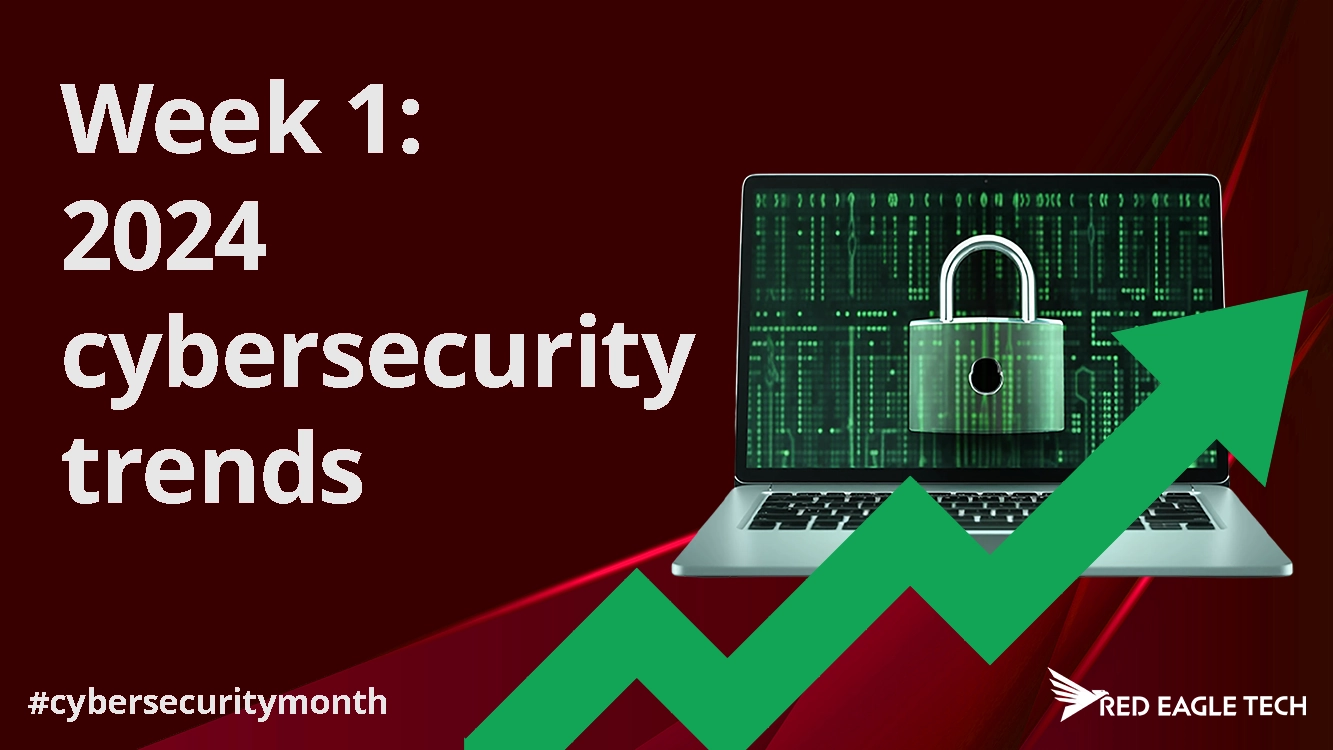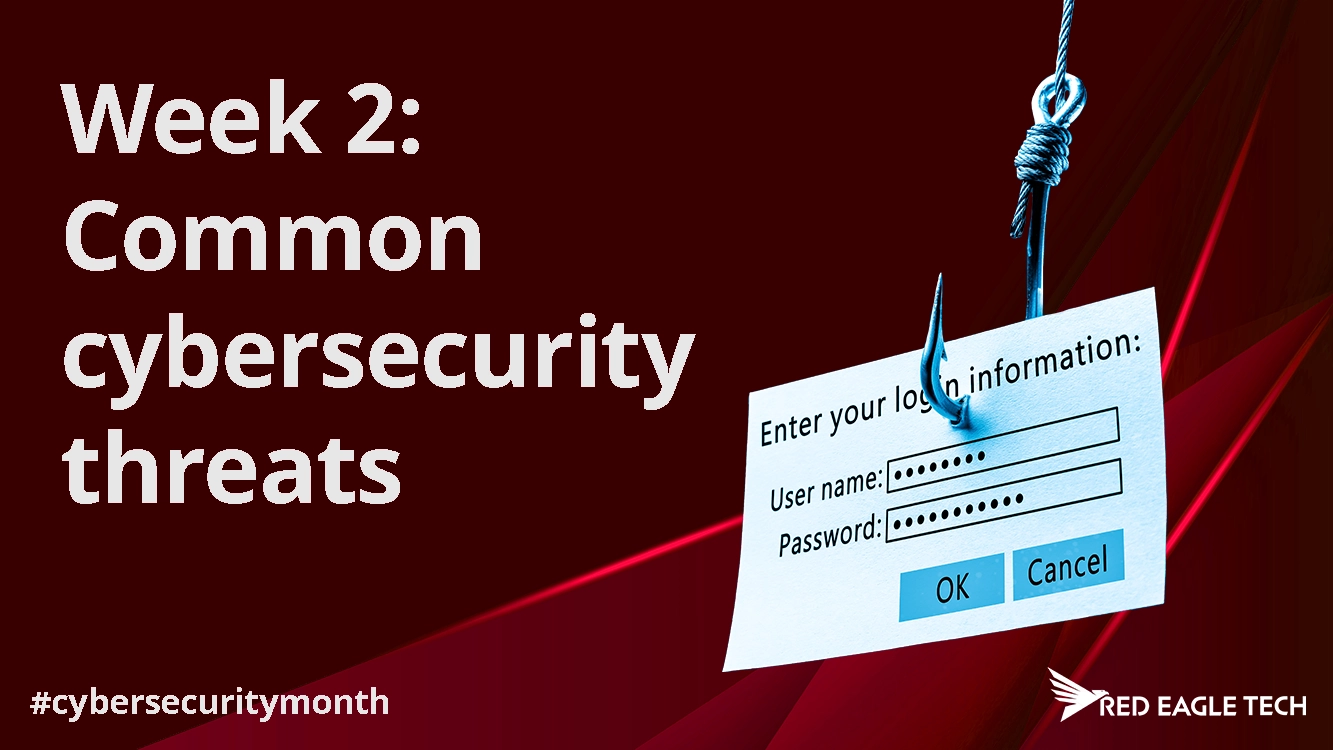
Cybersecurity Week 1: The Current State of Cybersecurity - Key Threats and Trends in 2024
As the end of 2024 fast approaches and we find ourselves in October (how did that happen?) we are excited to kick off this month's special series on Cybersecurity. Since it's Cybersecurity Awareness Month, we'll be sharing helpful blog articles throughout the month aimed at giving small and medium businesses the knowledge and tools they need to stay protected. This is so important, arguably more so than ever with emerging trends in more sophisticated cybercrime.
In this article we kick things off by taking a look at 2024 cybersecurity trends, including an overview of the major threats to be aware of, high-profile data breaches we've seen this year, cybercrime trends and what's driving them and current trends in threat mitigation.
Major cybersecurity threats to be aware of
Those pesky cybercriminals are constantly developing new tactics to exploit vulnerabilities within organisations, and nobody is immune. In fact, small and medium enterprises are often more at risk, for numerous reasons - one of which is whether they feel they have the time and money to put measures in place. Let's take a look at some of the most significant cyber threats we've seen in 2024 and the impact they've had.
- Ransomware Attacks: Ransomware remains one of the most pressing threats, with attackers using increasingly sophisticated techniques to encrypt files and demand hefty ransoms. In 2024, we're seeing a rise in double-extortion ransomware, where attackers not only encrypt data but also steal sensitive information and threaten to release it publicly if the ransom isn't paid.
- Phishing and social engineering: Phishing attacks continue to be a major concern, with attackers continuously employing more targeted and convincing tactics. Social engineering techniques are becoming more sophisticated, making it harder for individuals to discern legitimate communication from malicious attempts.
- Supply chain attacks: The complexity of modern supply chains has made them a lucrative target for cybercriminals. Recent incidents have shown how vulnerabilities in third-party vendors can be exploited to gain access to larger networks, leading to widespread damage.
High-profile data breaches in 2024
2024 has unfortunately seen quite a number of high-profile data breaches make headlines. This highlights the growing complexity and danger of cybersecurity threats. Let's have a look at some significant examples:
- UnitedHealth Group Breach: In one of the largest ransomware attacks of 2024, UnitedHealth suffered a devastating breach where cybercriminals, identified as Russia-based BlackCat/ALPHV group, claimed to have stolen 6 terabytes of data. The attack, which impacted approximately one-third of Americans, resulted in a temporary suspension of the company's platform. The estimated cost of the breach is $872 million. According to the CEO, this happened due to a lack of multifactor authentication because hackers were able to steal a password. This demonstrates that something as simple as multifactor authentication is so important for your company to have in place, because just one breach like this could cost you massively.
- Trello Data Leak: In January 2024, the project management tool Trello experienced a breach affecting over 15 million accounts. Attackers used publicly available APIs to scrape emails, usernames, and other account information, which were later sold on hacking forums. While Trello confirmed there was no unauthorized access, the exposure highlighted vulnerabilities in API security.
- Tangerine Telecom Breach: On February 18, 2024, Australian ISP Tangerine Telecom was targeted, resulting in the theft of over 200,000 customer records. The breach exposed personal information such as names, dates of birth, and contact details. It is believed the attack was caused by a compromised internal user account.
Cybercrime trends 2024
Let's take a look at some of the key trends in cybercrime for 2024.
- AI drives sophistication: The use of artificial intelligence (AI) and machine learning (ML) is transforming the type and severity of threats we're seeing, however we are still yet to see the full impact of generative AI. New technologies that are emerging, like quantum computing and 5G, will be exploited by cybercriminals.
- Global unrest: Global unrest has significantly contributed to the surge in cybercrime. As an example, financial hardship has driven organised crime groups and even individuals to engage in ransomware attacks, where organisations are extorted for large sums of money with the threat of their data being released.
- AI-enhanced social engineering: Cybercriminals know that there is huge success to be had in their agendas by playing on human emotions and vulnerabilities. AI is making this all more believable, because cybercriminals can create more personalised, convincing and accurate messages that are harder for individuals and automated systems to detect as being scams.
Trends in threat mitigation
Having read this far, hopefully it drives home the absolute importance of ensuring that you have robust security messages in place. Even failing to have something in place that might not seem like a big deal, like multifactor authentication, could heavily cost your business. Let's take a brief look at how some organisations are employing modern tools to mitigate threats.
- AI and Machine Learning in Cybersecurity: While we've said how AI is propelling the sophistication of cyber threats, on the flipside, it can also be used to assist in threat detection and mitigation. These technologies are being employed for advanced threat detection, automated response, and predictive analytics, helping organisations stay ahead of evolving threats.
- Zero Trust Architecture: The Zero Trust model, which assumes that threats could be internal as well as external, is gaining traction. This approach emphasises strict access controls, continuous monitoring, and validation of all users and devices.
- Increased Focus on Privacy Regulations: With data privacy regulations becoming more stringent, organisations are investing in compliance and privacy-enhancing technologies. Staying ahead of regulatory requirements is so important for avoiding legal repercussions and maintaining the trust of your customers.
2024 has so far been characterised by evolving threats, high-profile breaches, and new technological advancements. As cyber threats become more sophisticated and impactful, understanding these developments and what to do to get and stay protected is essential.
Next week, we will be taking a closer look at common cybersecurity threats and their impact, and in week three we'll give you the know-how to protect your business. Stay tuned for the rest of our Cybersecurity Awareness Month series!
Need help securing your business? Our IT Operations team specializes in cybersecurity solutions for businesses of all sizes. Contact us today for a free security consultation.










